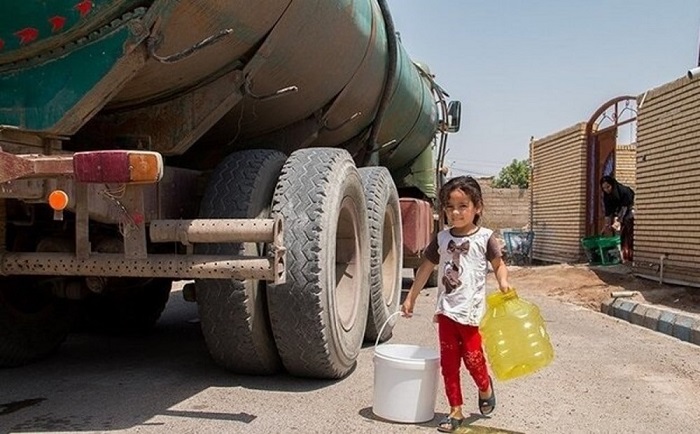
In a concerning disclosure, Ali Ahmadzadeh, governor of Kohgiluyeh and Boyer-Ahmad province, stated on August 17 that a growing number of villages have been abandoned due to severe “water tension”.
This announcement comes amid an intensifying water scarcity crisis that’s affecting vast regions of Iran.
Despite Kohgiluyeh and Boyer-Ahmad province housing 10% of Iran’s water resources, the area is now in the throes of an acute water shortage. Such scarcity isn’t isolated; it’s a pattern observed across Iran, particularly in its central and southern regions. The repeated water crises have fueled extensive protests by citizens, highlighting the government’s perceived failure in water management.
In a critique from August 2021, the chairman of the parliamentary Water Security Committee shed light on the involvement of certain governmental factions in illicit water exploitation. Actions taken, allegedly due to influential lobbying and power exertion, have devastated provinces like Lorestan, Chaharmahal and Bakhtiari, and Kohgiluyeh and Boyer-Ahmad.
July 2021-Thursday marked the 8th consecutive day of protests in Khuzestan province over water shortages and the Iranian regime’s destructive policies.#Iran #IranProtests pic.twitter.com/wUEBhad5P8
— NCRI-FAC (@iran_policy) July 22, 2021
Highlighting the gravity of the issue, Kerman-No, a member of the academic faculty at Shahid Bahonar University in Kerman, emphasized that the marked reduction in freshwater resources jeopardizes the future of central Iranian cities, especially Kerman. Research predicts that, within a quarter-century, southern Iran may become uninhabitable because of water scarcity.
This looming crisis isn’t restricted to the south. The desiccation of Lake Urmia might force parts of the northwestern city of Tabriz to evacuate, a consequence of ensuing salt storms.
Mismanagement has been a recurring theme. An article from Fars news agency on July 23 spotlighted the unchecked cultivation of water-intensive crops, excessive dam construction, and the establishment of water-demanding factories in arid areas. Such actions have rapidly drained water resources in Fars Province, an agricultural powerhouse.
November 19 – Isfahan, central #Iran
Farmers, joined by locals, continue protesting for their share of water from the local Zayandeh-rud River. Regime officials have long rerouted the waters for their own purposes.#IranProtests#اعتراضات_سراسریpic.twitter.com/nPk1h4QhdV— People's Mojahedin Organization of Iran (PMOI/MEK) (@Mojahedineng) November 19, 2021
Statements from key figures mirror these concerns. The International Marsh Restoration Organization’s secretary in Khuzestan highlighted that the depletion of water sources, compounded by authority negligence, has spurred village depopulation and forced migrations.
Similarly, the publication Arman-e-Melli pointed out the combined effects of drought and water scarcity. These crises have pushed Iranians to migrate, seeking less water-stressed areas. As an example, Bukan residents in Kurdistan Province face just 8 hours of daily water availability. From the drying Heshilan Marsh in Kermanshah to widespread land subsidence in Isfahan, Yazd, and Tehran, these challenges have led to mass evacuations.
In 2021, Mostafa Fadaie-Fard, a water expert, estimated the eventual displacement of over 37 million Iranians due to the water crisis’s indirect impacts, like land subsidence damaging critical infrastructure.
November 19 – Isfahan, central #Iran
Thousands of locals are joining farmers protesting for their share of water from the local Zayandeh-rud River. Regime officials have long rerouted the waters for their own purposes.#IranProtests#اعتراضات_سراسریpic.twitter.com/OCnuGUSEYM— People's Mojahedin Organization of Iran (PMOI/MEK) (@Mojahedineng) November 19, 2021
At the root of Iran’s water challenges lies systemic mismanagement. Entities like the Islamic Revolutionary Guard Corps (IRGC) have exacerbated the crisis with their control over water-intensive sectors. Profit-driven dam construction and unregulated water use in industries, including nuclear and steel, have further strained water resources, highlighting the urgent need for reform and sustainable management.

MEK Iran (follow us on Twitter and Facebook), Maryam Rajavi’s on her site, Twitter & Facebook, NCRI (Twitter & Facebook), and People’s Mojahedin Organization of Iran – MEK IRAN – YouTu
